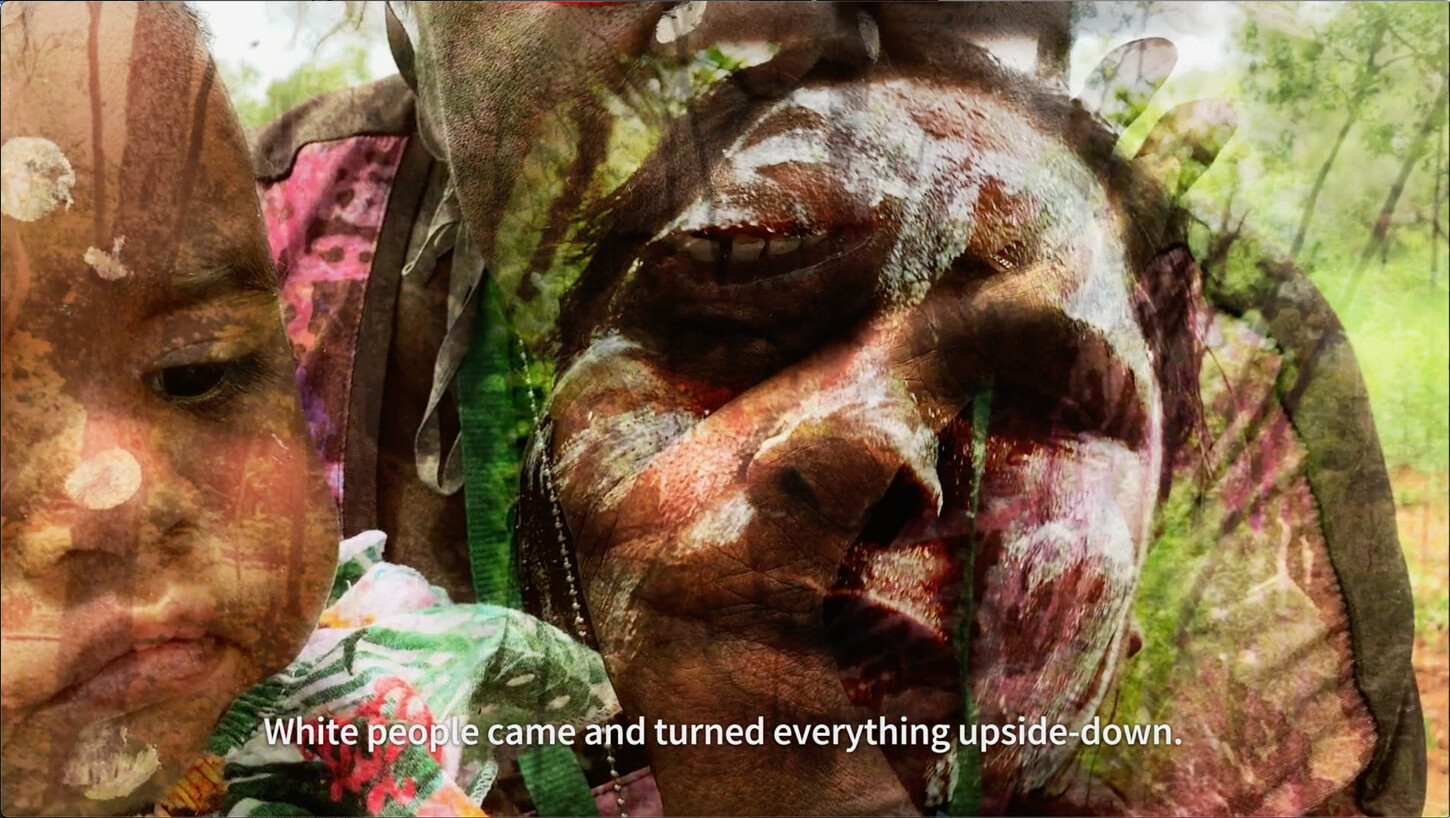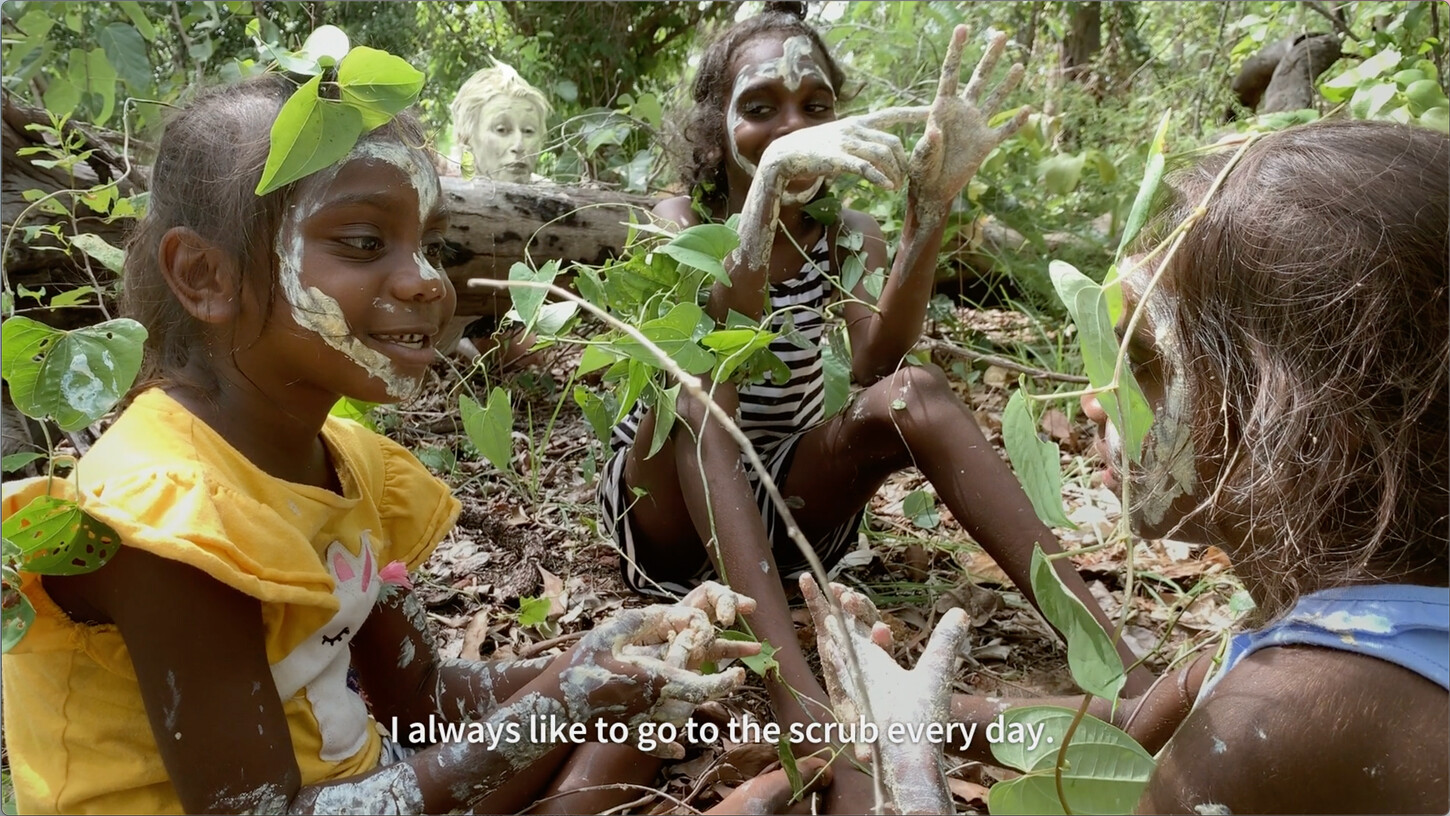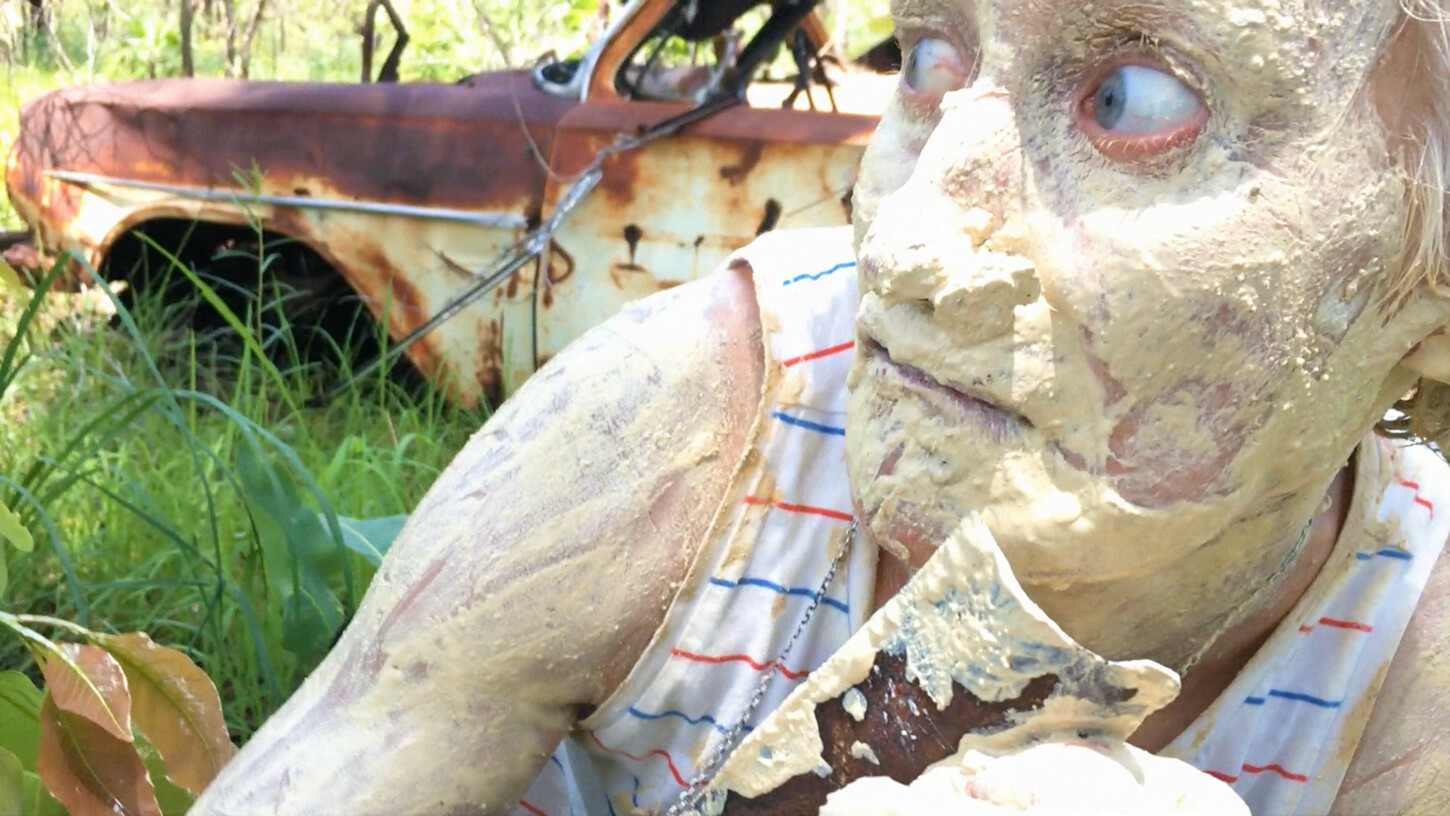Two conversations on opposite sides of the earth—one in an elevator in my New York City apartment building, one on the shores of Mabaluk, Australia, Emmiyengal country. Both conversations focused on earth elements characterized as “being wasted” as they were targeted for capitalist incorporation. In both conversations the referential meaning of “being wasted” oscillated, much as does Schumpeter’s characterization of capitalism’s creative destruction. At one moment the capitalist concepts of waste and creative destruction conjure the fantasy of superabundant resources; at another moment, they point to the history by which capitalism, the spawn of colonial geontopower, has laid waste to human and more-than-human worlds.
Neither conversation was long, neither academically substantial. The elevator conversation was guided by the sort of neighborly banter that characterizes apartment sociality in New York City. A neighbor and I were riding up to our floor. He was excited, having just gotten back from a business seminar on green energy. He said something like, “Think of all the energy of the sun just being wasted when it could be turned into something productive. And it will have no effect on the environment.” Picturing the new and expanding lithium mine just south of Belyuen, Northern Territory where my Karrabing family live, I said something like, “Well, only if we don’t think about the massive mines ripping up the earth for lithium and other stuff.” He said, “Yes, but think of all the energy around us going to waste.” I said, “Well, sunshine is being used by the things that it’s being used by.” He: “What things?” Me: “I wouldn’t have a clue; and we won’t know until after we’ve destroyed their conditions.” Ding went the elevator bell. We smiled, said good day, and that was that.
The conversation at Mabaluk was also brief. About ten Karrabing had driven the seven-hour drive from Belyuen for a long weekend of work mapping an extensive network of precolonial rock fish traps lining the coastal point. It was morning. We were using the embers from the night fire to make morning tea, and talking about plans for a late-afternoon hunt in the surrounding vast wetlands. I said something like, “You heard about berragut (settlers) wanting to harvest water for cotton and mango plantations?” Natasha Bigfoot Lewis observed something she’s observed before: “Berragut think anything they are not controlling is being wasted. They don’t think about goose, turtle, and bullock—and that grass they eat and water that feeds grass. They were here first. It’s their country too. If we don’t think for them, then they won’t be there when we go hunt them.” Cecilia Lewis, Natasha’s mother, overhearing us, added, “It’s because they wrecked that country down south. Then they wrecked Darwin. Starting to really wreck Belyuen area. So now they’re targeting this water.”

Film stills from Karrabing Film Collective’s The Family (2021). Courtesy of the artists.


Film stills from Karrabing Film Collective’s The Family (2021). Courtesy of the artists.
These two fleeting conversations are the everyday murmurs that pass in and through more focused debates about ancestral energy and agricultural futures, or what I have recently described as the social tenses, or chronotopes, of the ancestral catastrophe and the coming catastrophe.1 These two chronotopes are not merely temporal inversions—the one looking to the future, the other to the past. They are, instead, fundamentally different approaches to social time, political eventfulness, and ethical substance.2 From the perspective of the ancestral catastrophe, time is transformed into differential sedimentations that leak, drift, or disperse depending on the nature of their substance and holding conditions. The catastrophe of the ancestral catastrophe is not something that will happen, not something whose state change has a universal reach. It sinks into, mingles, and bubbles up from the ground. The coming catastrophe expresses the anxieties and disavowals of this ancestral legacy. Its core figuration is the ever-receding horizon where settler liberal capital once blithely claimed its truth lay, but is now a foreboding sightline of climate collapse. In the current climate crisis, the brilliant sun promises to purify the contaminated horizon of pure possibility. Its sheer radiant incomprehensible power aligns with the dream of pure profit based on the bounty of wasted matter—the singular manifestation of settler-capital disavowal. What scorches us will be what cools us.


Clip-on solar-powered fan by Unbranded that “will make you comfortable, and cool and let you enjoy the coolness. Solar power, no battery needed, only works in the direct sun. The brighter the sunlight, the faster the fan turns.”
We have accustomed ourselves to critiquing the quantificational logics of neoliberalism, logics that reduce existence to a set of commensurate units that can enter the logics of private property and capital exchange. One of the great attractions of George Bataille’s Accursed Share, for instance, is its emphasis on a superabundance of energy that cannot be contained by the rationality of social systems—that erupts in an erotic and pure sacred surplus. Bataille’s wager was that this superabundant energy, exceeding the closed economy of capitalism and manifested in a waste and wastefulness of low material (shit, orgasm, sadism, war, human sacrifice), can never be fully recuperated into any social system.3 But, in a less read essay, Gayatri Spivak suggests that we might want to be cautious before separating capital and pure surplus. If, on the one hand, liberal capital claims the power to eat every last smear of its own excrement, on the other hand, it insists that the productive individual always has more power than she actual is. This bizarre, grammatically awkward phasing—that subjects are more than they are—lies at the heart of the “predication of the subject as labor-power (irreducible structural super-adequation—the subject defined by its capacity to produce more than itself).”4 This subject, in other words, is predicated as her own little sun.
The discursive toggle of excess energy which, on the one hand, threatens because it cannot be totalized and yet, on the other, beckons because it provides the dream of pure surplus, is explicitly mobilized during liberal and capital crises, but is also a constant pressure exerted across its wasted earth. Super-adequate subjects of capital powered by the superabundant energy that comes from pure waste continually roam the earth even as the ancestral catastrophe of the Black Atlantic and settler colonialism restrict agricultural acreage and potable water. The energy needed for the disavowal of this ancestral history grows ever greater until it finds that only the scorching sun will suffice. As geontological frameworks quake in the wake of a toxic homecoming of liberal capitalism, Western techno-energy bros and agricultural visions have shifted from the human subject to nature as subject, even as they double down on the predication of nature as a super-adequate being.


TikTok by Pasha Grozdov, uploaded on June 5, 2022. Copyright: Pasha Grozdov and TikTok.
Natasha Bigfoot Lewis’s observations that the concept of waste arises only by severing the perspectives of those forms of existence that exist within and as all places before the characterization of them as waste shifts the problem from the need for food production to the fantasy of pure eating. We move from the quantitative logics of units of food produced and consumed to the jouissance of Rabelaisian bulimia, from the relational world of eating to a system of severed eating whose lateral consequences have yet to intrude on the worlds able to shit downwind. This shit comes in many forms. It is never, however, manure. It does not fertilize the land. It spreads toxins, cracking landscapes and exposing existence to forces that mutate its current relationality.5 Pure eating is a form of devouring that disavows its spreading corrosive effects, the reach of its clawing hands, producing the toxic tailings which cannot be assimilated, which do not extinguish existence so much as produce new forms of existence. Pure eating meets creative destruction when toxic wastes are plowed back into lands as if they were fertilizers of the future. In this way, plastic-eating bacteria are not far afield from David Cronenberg’s world of a plastic-eating morphumanity. The ancestral present of these morphumans can be glimpsed at the intersection of the taut sealed-off bodies of fitness and the paunchy overflow of consumptive addictions.
While sunlight provides the figure of pure eating, other elements fall into the fantasy of excessive waste as they were targeted for climate-destroying capitalist incorporation.
Take, for example, “Our North, Our Future: White Paper on Developing Northern Australia,” which figures monsoonal water as unruly, unrulable, and able to be culled without consequence.6 The dynamics of rainwater and soil have frustrated colonial agricultural projects in the Northern Territory since settlers began surveying for blind property sales in 1869.7 Historically, monsoonal rains began in January and gave way to dry skies in March. During these ferocious rains, farmlands flooded out and then parched. Pastoral cattle bogged and starved. As Cecilia Lewis notes, the ongoing wreckage of settler expansion—in its distributed climate impacts and forms and in its specific localized practices—has transformed the cycle of rain in the Northern Territory even as historical rain is constantly conjured in reports focused on capitalizing on it as an agricultural resource. Water is described in terms that mean to evoke and exceed ordinary phenomenological experience in order to produce an imaginary quantificational superabundance. The monsoons are put in a bucket, something everyone has held in their hand. But the bucket is said to be the size of the Melbourne Cricket Ground, “the height of more than 80,000 km, or more than 20 per cent of the way to the moon.”8
No mention is made of the current inconsistency of rains, the relationship between current and historical aquifer levels. Older members of Karrabing and other Indigenous peoples with long memories and experience of lands remember places where puminin (water holes from flooding aquifers) bubbled up from the ground, now dried from settlements. Massive floods drowning Australian cities are sometimes correlated to the dense, pounded earth of capital infrastructures. But the ideologically harnessible experience of increasingly regular flooding is one of too much, more than enough, wasting, wasteful. Effect is figured as cause. Colonized soil creates the conditions for an uncontrollable earth, intensifying settler disavowal, whose material manifestations are modes of damning others as they try to dam themselves off from their own sludge.9


Picture: Freepik.com.
Rather than food, we need a history of distributed sludge, created by the disavowal of pure eating. As Filipa César has shown, the politics of soil has a long anti-colonial signature, and the soil-based liberation project of Amílcar Cabral provides one track: “Cabral understood agronomy not merely as a discipline combining geology, soil science, agriculture, biology and economics but as a means to gain materialist and situated knowledge about peoples’ lived conditions under colonialism.”10 Cabral and others sought not merely to highlight and reverse the agricultural deterioration of colonial lands but to interrupt the disavowal of the chains of destruction that provide the basis of bounty—by, for example, mapping the topological relationship between the hollowing-out of the Pacific Islands and Morocco for phosphates and the building-up of nutrient-rich soils in North America and Australia.11 Or, literalizing the climate metaphor of global development: for all boats to rise, rather than the boats sailing the highest seas to recede, the North will keep gaining ground while those who never needed to live on boats slowly lose the ground beneath their feet.
Elizabeth A. Povinelli, Between Gaia and Ground: Four Axioms of Existence and the Ancestral Catastrophe of Late Liberalism (Duke University Press, 2021).
Elizabeth A. Povinelli, Economies of Abandonment (Duke University Press, 2011).
George Bataille, The Accursed Share: An Essay of General Economy, vol. 1 (Princeton University Press, 1991). See also Allan Stoekl’s unpacking of Bataille’s philosophy of energy and consumption relative to concepts of sustainability: Bataille’s Peak: Energy, Religion, and Postsustainability (University of Minnesota Press, 2007).
Gayatri Spivak, “Scattered Speculations on the Question of Value,” in In Other Worlds: Essays in Cultural Politics (Routledge, 2006), 216.
Michelle Murphy, Landscapes of Exposure: Knowledge and Exposure in Modern Environments (University of Chicago Press, 2004).
See →.
Tess Lea, Darwin (NewSouth, 2014).
“Our North, Our Future,” 4.
Liam Grealy and Kirsty Howie, “Securing Supply: Governing Drinking Water in the Northern Territory,” Australian Geographer 51, no. 3 (2020).
Filipa César, “Meteorisations: Reading Amílcar Cabral’s Agronomy of Liberation,” Third Text 32, no. 2–3 (2018).
Katerina Martina Teaiwa, Consuming Ocean Island: Stories of People and Phosphate from Banaba (Indiana University Press, 2014); Renee Cho, “Phosphorus: Essential to Life—Are We Running Out?” State of the Planet, Columbia Climate School, April 1, 2013 →.





